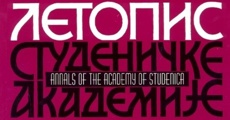| |
Although
the conference report literature is not considered to be validly
published data, it has become a very substantial portion of the
total literature in many areas of science in recent years. Conference
reports are generally defined as not validly published data for
several reasons, among others being the most important is the
lack of any real quality control. Therefore, many reputable publishers
define proceedigs volumes as non-primary.
Fortunately, more and more conference proceedings are rigorously
edited (e. g. 2002WSEAS International Confernece on Nanoelectronics
and Nanotechnologies) and their prestige is equal to primary jurnals.
Some conference proceedings appear as issues of journals.
Thus, the content and quality of the conference report will mostly
depend on whether the proceeedings volume will be defined as primary
or non-primary one.
Therefore, if previosly unpublished data presented at the conference
have not been validly published that may preclude later republication
in a primary journal. If the proceedings volume is judged to be
primary, editor will precisely indicate to prepare your manuscript
in journal style. Then, you should give full experimantal detail,
present both data and discussion of the data as it would be in
a prestigious journal. If the proceeding volume is non-primary
publication, the style of writing may be quite different. Conference
report should be designed to give the news and the speculations,
without experimental details and the usual literature review.
The conference report can be relatively short. It is often limited
to one or two printed pages, or 1000 to 2000 words. Authors are
usually provided with a simple formulation such as "up to six
manuscript pages, double spaced, two columns, not more than four
illustrations(any combinations of tables, graphs or photographs)".
The conference report shoud serve the purpose of a true preliminary
report; it should present and encourage speculation, alternative
theories, and suggestions for future research. Therefore, the
typical conference report needs not to follow the usual IMRAD
formula. Instead, abbreviated approach may be used: the problem
is stated; the methods/techiques used are stated but not descibed
in detail; the results are presented briefly, with a few (1-3)
tables or figures; the meaning of the results specualted about
should be given in considerable length; the literature review
mostly includes the results from the author's laboratory or of
the colleagues working on related problems.
It should be always kept in mind that the editor of the proceedings,
usually the conference organizer, is the sole arbiter of questions
relating to manuscript preparation. If the editor has distributed
Instructions to Authors you should follow them whatever the rules
are. Following the rules, the resultant volume is likely to be
of conistent value and be a credit to all concerned.
REFERENCES
1. Day AR. How to write and published a
scientific paper. Phoenix-New York: Oryx Press; 1998. p. 168-71.
2. Savić J. Kako napisati, objaviti i vrednovti naučno delo u
biomedicini. Beograd: Kultura; 1996. p. 8-56.
3. Philips JS. Principles of the scientific paper. In: EAU Publication
Committee - Chairman: Prof. C. Schulman. editor. How to: write
and publish scientific papers. Proceedings of the the educational
symposium. "Effective Communications for Urologists"; 1999. p.
7-10.
|
|

